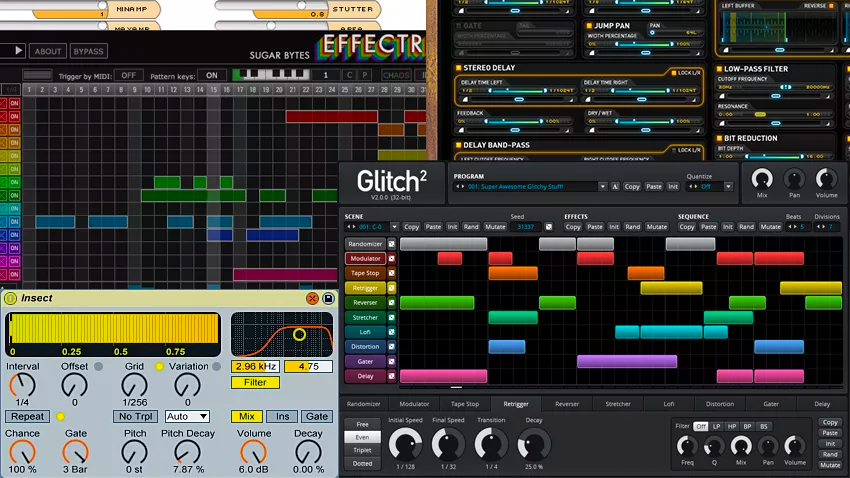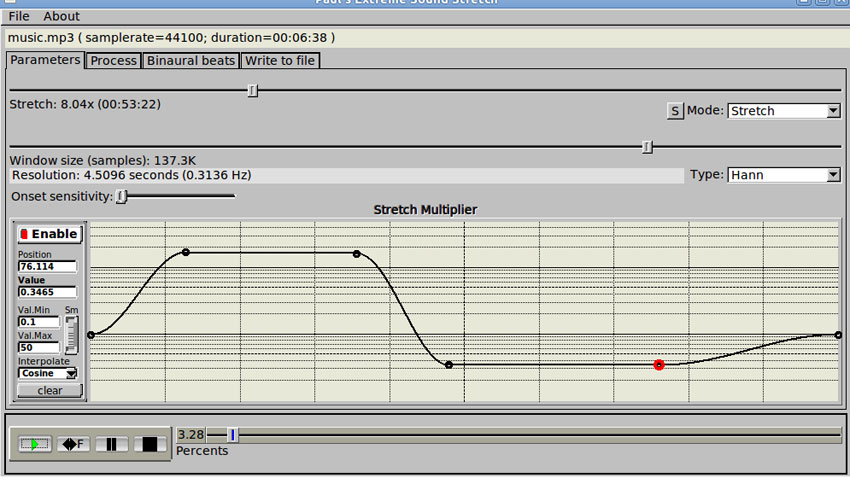4 ways to glitch out your productions
We take a look at the core techniques involved in getting the uniquely glitchy sound of Skrillex, Autechre and KOAN Sound

Technically speaking, a ‘glitch’ is defined as an error or malfunction, but in a music making context we tend to use it to refer to any effect that sounds malfunction-like, even when the effects are usually very purposeful and deliberate.
While there are numerous plugins out there specifically designed to glitch up your audio, a ‘glitch’ isn’t necessarily a single effect. Rather, what we refer to as ‘glitch’ effects tend to use a variety of different processes, such as audio repeats or looping, gating, pitch manipulation and randomisation – most often combining several of these techniques.
In a musical context ‘glitch’ is often associated with artists like IDM linchpins Autechre or Aphex Twin, the ‘big room’ dubstep of Skrillex, trance icon BT – who co-created iZotope’s glitch-centric Stutter Edit – or the ‘glitch-hop’ of acts like Glitch Mob or KOAN Sound.
More subtle uses of glitch techniques can be found throughout modern music though, from pop to techno to neo-classical. Let’s look at a few of the fundamental techniques involved..
Audio edits
While plenty of plugins do the job, the simplest way to create glitch effects is to get hands on with so-called ‘micro edits’.

This involves slicing and manipulating small individual elements of an audio file – often single hits or transients. Try duplicating drum elements to create quick, stutter-like repeats.
Have the spacing of these repeats get closer together each time, to create a ‘ramp’ effect. Try cutting sections of silence into a reverb-heavy audio file to create unnatural ‘gating’ effects. Or applying extreme pitch manipulation to single words in a vocal. Experiment – make small changes and listen back. It’s a time-consuming process, but it’s a great way to make ear-catching effects.
Get the MusicRadar Newsletter
Want all the hottest music and gear news, reviews, deals, features and more, direct to your inbox? Sign up here.
Resample!
Resampling simply means recording existing sounds from your project and replaying and manipulating them. Capture recordings with plenty of effects present – time and space effects such as delays, extreme reverbs and rhythmic filter modulation work well.
Try capturing loops and using a sampler to play the sound back at a pitch wildly different from the original recording so that the recorded effects create new rhythms.
Modulate or randomise the pitch, timing and loop length, or reverse the playback of your loop. No need to resample just once either – process, record, replay and process again. See how far you can push a sound from its original context.
Stretch and warp
Almost all modern DAWs contain some pitchshifting and audio warping capabilities. Generally, these are designed to be as natural as possible – users can adjust the pitch or timing of an audio file without it sounding unnatural.

If pushed to extreme, though, these tools can sound downright odd, and great for ‘wrong’-sounding effects.
Audio editors, like Ableton Live’s Clips, offer multiple algorithm types; changing these can have a major impact on the qualities of the sound. Editors that allow for manipulation of formants are great for oddball effects. Extreme stretching tools like ‘Paulstretch’ – now found in free editor Audacity – are great for turning simple sounds into soundscapes.
Add some noise
Introducing a touch of white noise can be a great way to make things sound a little ‘broken’. While layering in full loops of white or tape noise is great for lo-fi effects, for glitch effects short bursts of noise are a better approach.
Try taking a drum loop and replacing occasional hits – such as individual snares or kicks – with abrupt bursts of white noise. Alternatively, take longer recordings or noise and use rhythmic gates to create ‘chops’.
Apply delays to these rhythmic noise effects to take things further, or modulate and randomise the timing of the gates to create unpredictable patterns of rhythmic noise.
Future Music is the number one magazine for today's producers. Packed with technique and technology we'll help you make great new music. All-access artist interviews, in-depth gear reviews, essential production tutorials and much more. Every marvellous monthly edition features reliable reviews of the latest and greatest hardware and software technology and techniques, unparalleled advice, in-depth interviews, sensational free samples and so much more to improve the experience and outcome of your music-making.
“From a music production perspective, I really like a lot of what Equinox is capable of – it’s a shame it's priced for the post-production market”: iZotope Equinox review
"This is the amp that defined what electric guitar sounds like": Universal Audio releases its UAFX Woodrow '55 pedal as a plugin, putting an "American classic" in your DAW










